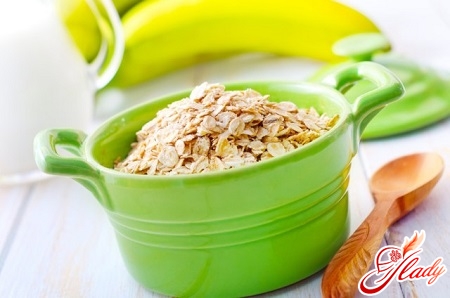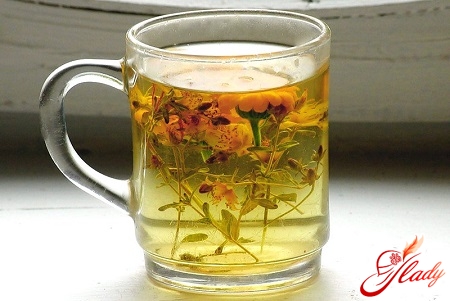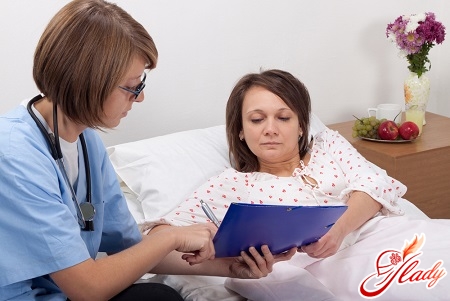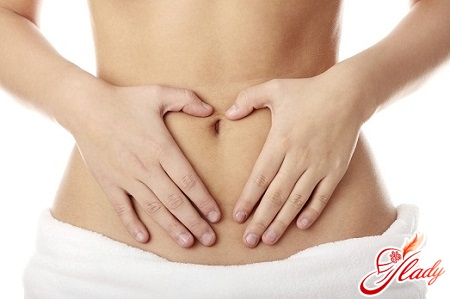
Interstitial cystitis is a non-infectiousinflammatory disease, which is associated with the weakening of the immune system, which is why the state of the mucous membrane of the bladder is disturbed. Often, patients will learn about this disease after a long-term inconclusive treatment with antibiotics. And in the analysis of urine, urological pathologies are not detected, and bacterial flora and cytological examination are negative. This type of cystitis - the so-called chronic cystitis - is an exception. He is diagnosed when there are no other diseases of the bladder. Most often, interstitial cystitis affects women in their reproductive years and very rarely children, men and the elderly. For many years, the symptoms of the disease may not be felt, but at some point they manifest themselves sharply, and after a while stabilize. Therefore, many patients think that they can live with this disease. Chronic cystitis manifests itself several times a year for undetected reasons.
Symptoms of interstitial cystitis
Doctors distinguish the following main symptoms of the disease:
- lower abdominal pain;
- pain during intercourse;
- frequent urge to urinate;
- impurities of blood in the urine;
- pain when urinating;
- back pain.
Pain syndrome with this disease is oftenWeaken after bladder emptying, but painful sensations resume again when it is filled. Interstitial cystitis usually takes place in a cyclic form and often has a progressive character.
Causes of the disease
To date, the etiology of interstitial cystitis is unknown, but there are possible prerequisites for this disease:
- Violation of the protective layer of the bladder mucosa;
- Infections;
- Neuropathy;
- Psychological problems;
- Diseases of the immune system;
- Disruption of exchange of nitric oxide;
- Lymphatic stasis;
- The effect on the body of toxic substances contained in urine.
Despite the fact that none of these reasonsit is proved, nevertheless, the main cause of the disease is considered to be a shortage of glycosaminoglycates in the bladder membrane. Because of this, the toxic components that are contained in the urine penetrate the walls of the bladder and cause inflammation. We can identify certain risk factors that affect the manifestation of interstitial cystitis. These include:
- operations in the field of gynecology;
- spastic colitis;
- rheumatoid arthritis;
- bronchial asthma;
- allergy to medicines;
- autoimmune diseases.
Symptoms of the disease are often exacerbated by:
- Changes in the hormonal background;
- Frequent sexual contact;
- Excessive consumption of chocolate, alcohol, coffee and spicy foods.
Diagnosis of the disease
To date, universal methodsdiagnosis does not exist. In any case, the diagnosis begins with the exclusion of other diseases of the bladder, acute or chronic cystitis, tumors, urethritis, prostatitis, etc. In addition, the following methods are used:
- Cystoscopy;
- Hydrodistension;
- Potassium stimulation test;
- Biopsy.
Now consider each method in more detail. Cystoscopy is a method that allows you to examine the inner surface of the bladder with a cystoscope inserted through the urethra into the bladder. The camera, which is placed on the end of the cystoscope, allows you to display the image on a special screen. This method helps to identify scars, various inflammations, tumors, stones in the bladder. The procedure is performed under general anesthesia. Hydrodistension is carried out simultaneously with cystoscopy under general anesthesia. The essence of the procedure is that the bladder is filled with liquid. So determine its elasticity. A healthy bladder stretches 2-3 times. If the bladder is inflamed, it is stretched with difficulty and its elasticity is significantly reduced. If after the procedure of hydrodistension on the mucous membrane, hemorrhages are detected, the patient is diagnosed with interstitial cystitis. This procedure is therapeutic and diagnostic at the same time, since the first procedure is considered diagnostic (although in some patients the symptoms of the disease go away), and subsequent - are already conducted with therapeutic purposes. The potassium stimulation test is a diagnostic method that is not used as often as the methods described above. Potassium is a microelement that is necessary for the normal functioning of all cells in the body. The specificity of this method is that potassium is able to penetrate into the inflamed mucous membrane of the bladder. Healthy mucous is resistant to penetration of potassium. Therefore, when potassium chloride is introduced into the inflamed mucosa, it penetrates into the wall of the bladder. So there is irritation, a urge to urinate and pain in the lower abdomen. Because of these potassium properties, patients should exclude potassium-containing foods from the diet. These include dried apricots, raisins, seeds, nuts, bananas, etc. Biopsy is an optional method that is prescribed by the attending physician if there are suspicions of malignant processes. 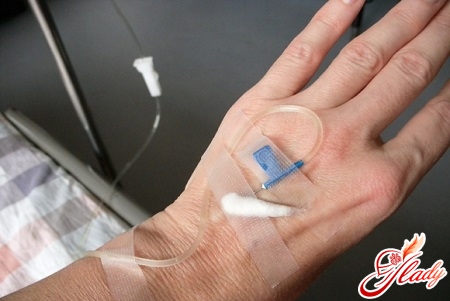
Treatment of interstitial cystitis
Unfortunately, there is no universal methodgetting rid of interstitial cystitis. But all the same, his treatment is carried out according to established rules by certain medicines. First of all, it is necessary to note the observance of the diet. The essence of this principle is that some products irritate the mucous membrane of the bladder. Many patients very badly tolerate food containing potassium and acid. The list of these products is different for each patient, but alcohol and coffee are absolutely counter-indicative. Also products such as chocolate, tomatoes, bananas, citrus fruits and food containing acid have a negative effect on the condition of the bladder. When dieting patients are advised to drink more water to reduce the concentration in the urine of substances that can irritate the bladder. Often the treatment of interstitial cystitis is accompanied by symptomatic therapy, appointed by trial and error until a means is found that can improve the patient's condition. Doctors usually treat with antidepressants, antihistamines, antibiotics. These drugs alleviate symptoms, reduce pain and reduce the frequency of urge to urinate. More aggressive treatment is the direct administration of special solutions (dimethylsulfoxide, cocktails from antibiotics, pentosan sulfate, etc.) into the bladder for chemical treatment of nerve endings in its walls. For example, botulinum toxin destroys nerve endings and eliminates the hypersensitivity of the bladder. To ease the disease, some patients are prescribed procedures for hydraulic stretching of the bladder. Surgical intervention is the method used in the most extreme case. This removes part or all of the bladder completely. Even this method does not give a 100% guarantee for recovery, some patients have symptoms of the disease. As for the treatment of interstitial cystitis with folk remedies, it is better not to engage in self-medication, because interstitial cystitis is a complicated form of ordinary cystitis. Of course, with ordinary cystitis patients use complex therapy, combining the treatment with medicines with folk recipes. Very popular and effective diuretic herbs (kidney tea, bearberry), as well as various fees (St. John's wort, field horsetail, chamomile, etc.). Significantly alleviate the symptoms of the disease, celery and medicinal althae. Treatment with folk methods usually lasts about 3 weeks. In any case, before use, you should always read the contraindications and consult with your doctor. Interstitial cystitis is a chronic cystitis, therefore the treatment of this disease is a long process. Today, it is treated with a set of certain methods, which can be problematic to choose, since each case of the disease is individual. It often happens that a patient can not be diagnosed correctly for a long time and, accordingly, he can not receive adequate treatment all this time. Thus, the main difficulty of treating interstitial cystitis is that there is no standard treatment course for all patients. Therapy is more effective if you recognize the disease at an early stage. In any case, waiting for rapid results is not necessary, often for treatment takes even a few months. The goal of the treatment is first of all to ease the patient's symptoms, give an idea of the basic principles of the diet, and also explain how to continue living with this disease.






